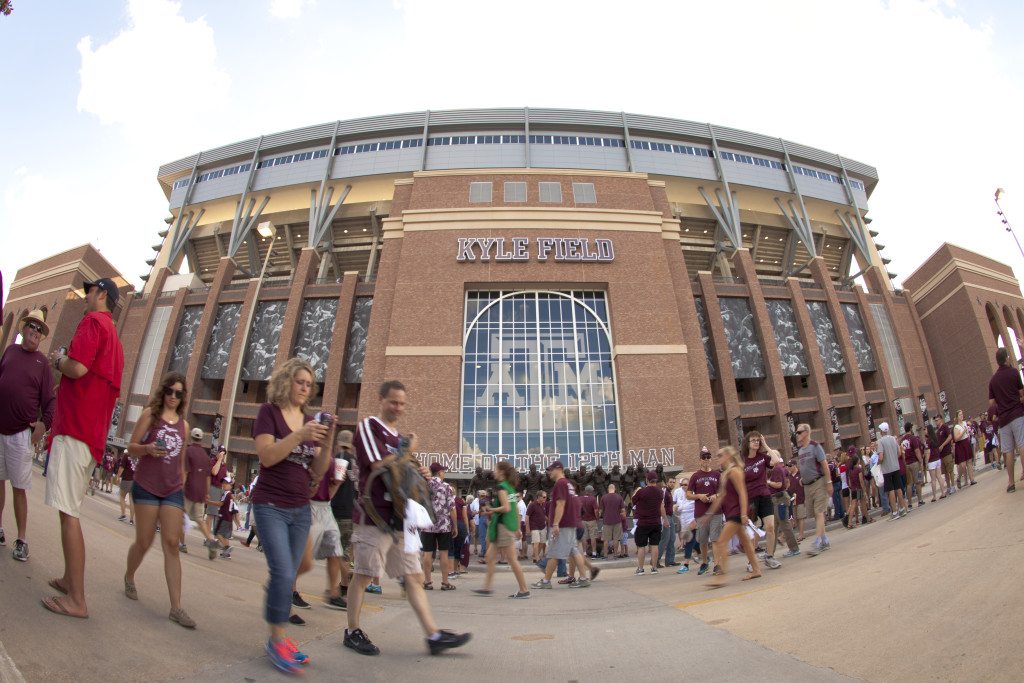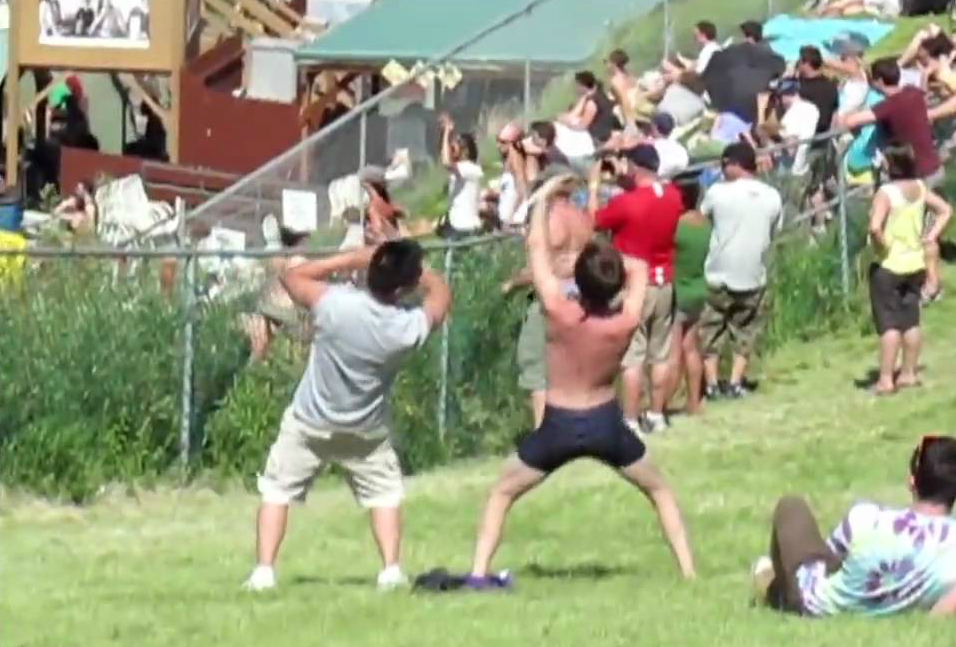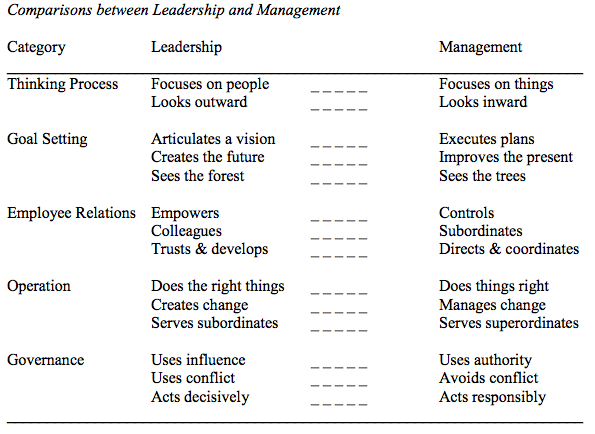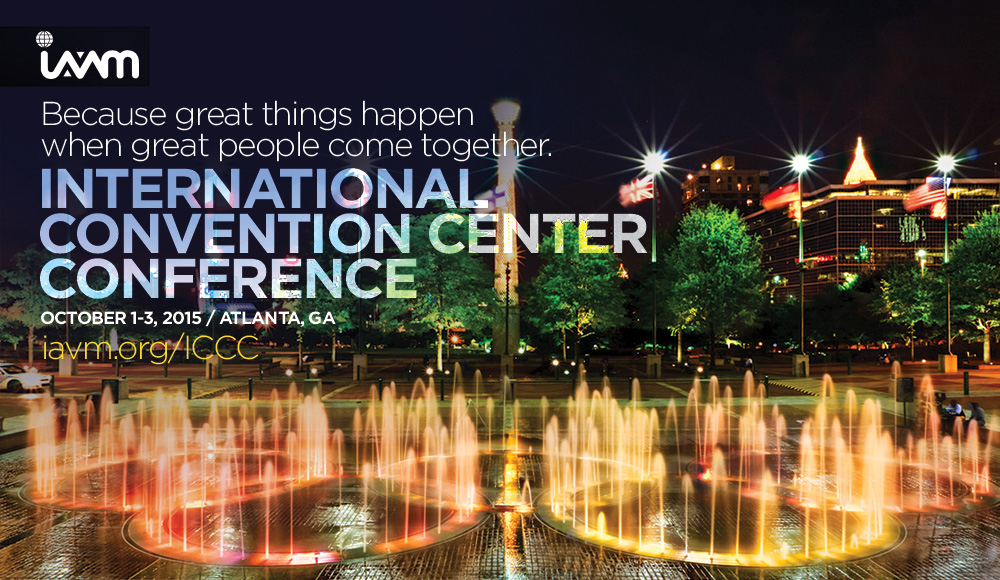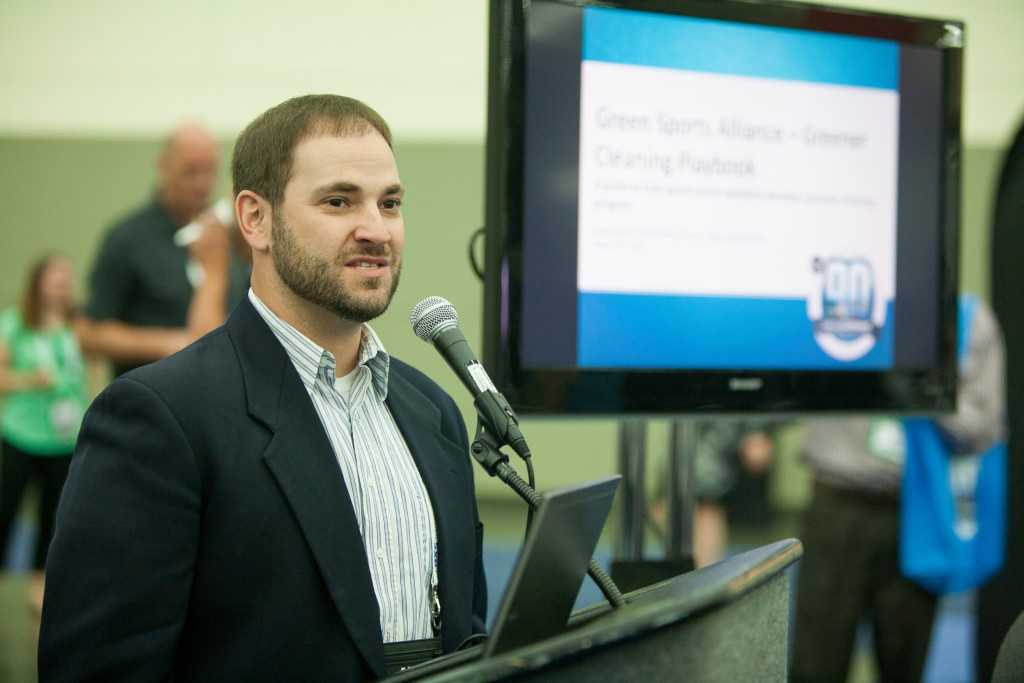World’s Largest Tailgate Planned for Kyle Field Reopening
You’re invited to the “world’s largest tailgate” next week when Kyle Field at Texas A&M in College Station, Texas, reopens after a $485 million renovation led by Populous.
Students, former students, and fans around the world are encouraged to join those in College Station by virtually tailgating on September 12.
“We invite everyone who loves Kyle Field – home of the 12th Man – to take part in this celebration, whether right here in College Station or anywhere around the globe,” said John Sharp, chancellor of The Texas A&M University System. “Through the power of social media, we can all be part of this once-in-a-lifetime event on the day that Kyle Field comes back to life.”
According to the press release from Texas A&M, to join (and for a chance to have Aggie tailgate photos from anywhere in the world shown on the video boards at Kyle Field), follow these steps:
· Register your tailgate prior to September 11 at www.kylefield.com and provide the location and estimated number of attendees at the tailgate;
· Regardless of location and time differences, once your tailgate begins, tweet photos using the hashtag #KyleField;
· The hashtag will be monitored, and photos from the global tailgate will be streamed to the video board in the redeveloped Kyle Field.
To learn more about Kyle Field’s renovation, please watch the video below from Populous.
(Image: Populous)
Shut Up and Dance With Me
There is a wonderful YouTube video showing a young man dressed in black shorts, dancing (badly) alone on a hill at a music festival. The video [screenshot above] shows him dancing for about 30 seconds before he is joined by another man who mimics his outrageous moves. They embrace each other’s terrible dancing, but carry on none the less. A third man joins in, and before long this maverick, crazy, dancing man is surrounded by hundreds of people dancing to the music. His courage and that of his first and second follower have created a movement and he, the lone maverick, has disappeared inside the group of people who are all now dancing together. It is a funny video but really does showcase leadership quite well. Every leader needs to share his vision, he needs a follower who he embraces and treats as an equal, and before he knows it, he has started a movement.
I often wonder about the qualities of a good leader, and it reminded me of a story my dad once told me. When Attila the Hun gathered the Hun tribes together, with the intention of ruling parts of Europe, he outlined his plans and asked if anyone had any objections. One of the leaders stood up and objected to going to war against the Roman Empire. According to my dad, Attila drew his sword and cut off this head, turned to the rest of the gathered Huns and asked if anyone else had any objections. I don’t know how true that story was, but perhaps my dad was simply enforcing the idea to 13-year-old me that it was not a good idea to challenge the pack leader. Growing up in a conservative society in South Africa, our leaders appeared to be strong, decisive, and unyielding. They barked orders and uncompromisingly enforced their will. Leadership through fear is seldom a recipe for success, and these types of leaders are often toppled.
So what is the language and behavior of a leader, as opposed to a manager?
Leadership vs. Management comparisons categories according to professor Fred C. Lunenburg, PhD, are listed below:
Leaders don’t have all the answers; leaders don’t pretend to have the answers. Leaders care. Leadership is about creating the vision, sharing and articulating it, and taking people on the journey.
Leadership creates trust, not an easy thing to do. Trust is one of those qualities that takes a lifetime to create and seconds to destroy. I have found myself working my career with either start-up or financially distressed businesses. The very first thing I do is agree to a value system with the staff. Defined values creates an environment where people can flourish knowing that they operate in a circle of trust. Leaders need certain traits, either naturally or learnt. While at VenueConnect in Baltimore, I attended two sessions on leadership led by Curt Cronin, an ex-Navy Seal. Cronin is a great speaker and obviously a deep thinker with brilliant content and well worth learning from. There were a few aspects of his discussion that really resonated with me. He told a story of going to work at the embassy in Yemen and gained trust by empting bins and making coffee. He spoke about earning trust and aligning leadership through humility rather than ego. He also spoke about fear. One seldom links Navy Seals with fear, but he said leaders remove fear and foster empowerment. He also said something that astounded me about the Seals—they learn mental resilience rather than physical prowess. This really struck a chord with me about leadership and the need to persevere. I have often stood in front of our staff body, waxed lyrical about values, inclusion, and how we as team leaders need to be active listeners to find that days later nothing had changed. Leadership needs resilience—change doesn’t happen merely because one says it should. It happens when one demonstrates change through one’s own action.
I remember having a discussion with John Key (New Zealand’s Prime Minister, and yes I am name dropping). He told me the one thing he disliked most about politics is that when you come up with a great idea, at least 30 percent of people will tear it to shreds without ever providing a different solution or alternative answer, whereas in business, a good idea is embraced with debate and positive input to make a good idea a great idea. Often when one is working in distressed businesses, they come with staff who, despite all their hard work, have had the enthusiasm knocked out of them. Once we have created the values, the circle of trust and removed the fear, I take advice from the band Walk The Moon with a little poetic license and say,
“Oh don’t you dare look back.
Just keep your eyes on me.
He said, ‘You’re holding back,’
I said, ‘Shut up and dance with me!’
This team is your destiny
I said, ‘Ooh-ooh-hoo,
Shut up and dance with me.'”
Meet This Year’s ICCC Scholarship + Internship Recipients
The IAVM Foundation is proud to announce the Joseph A. Floreano Scholarship + Internship Program recipients for the 2015 International Convention Center Conference (ICCC), recognizing five, deserving individuals who demonstrate leadership, character, community involvement, and the potential to be future leaders in the venue management industry. The Foundation also offers scholarships + internships to a variety of other IAVM conferences and schools, click here to learn more and to apply. Thanks to the support of committed donors, together we are Building Amazing Futures. Click here to learn more about the Foundation’s annual campaign.
 Mac Campbell, Outstanding Leadership Scholarship
Mac Campbell, Outstanding Leadership Scholarship
Director of Guest Services, Baltimore Convention Center
Favorite team? The Washington Capitals.
Your favorite sports or entertainment memory? As a spectator, it would be Sergei Fedorov’s 2009 Game Seven winner against the Rangers. The closest thing to being able to actually “taste” energy/excitement.
If you could be any animal, what would you be and why? A bulldog without a second thought. The wrinklier and fatter the better. There’s a certain calm-cool-and-collected air about bulldogs that you just can’t beat.
If you could be any superhero, who would you be and why? Professor X would work for me…would make labor negotiations a breeze!
“What is your ultimate dream job in the industry? General manager of a convention center or performing arts center.
Favorite quote? “Nobody in life gets exactly what they tought they were going to get. But if you work really hard and you’re kind, amazing things will happen. –Conan O’Brien.
@Twitter handle: @mcampbell930
LinkedIn: https://www.linkedin.com/in/mcampbell83
 Shannon McCullough, Outstanding Leadership Scholarship
Shannon McCullough, Outstanding Leadership Scholarship
Director of Operations, The Classic Center
Favorite musician/band? Eric Church.
If you could be any superhero, who would you be and why? Superman, because I like saving the day.
What is your ultimate dream job in the industry? I would like to be the executive director of a large convention center.
Favorite quote? You can only become truly accomplished at something you love. Don’t make money your goal. Instead, pursue the things you love doing and then do them so well that people can’t take their eyes off of you.” –Maya Angelou
Favorite childhood snack? Moon pie.
LinkedIn: https://www.linkedin.com/pub/shannon-mccullough/b/63b/5a3
 Marieliz Collazo, Industry Women Scholarship
Marieliz Collazo, Industry Women Scholarship
Sponsorship Account Manager, Jose Dueño Entertainment
Favorite bands? Coldplay and Café Tacuba.
Your favorite sports or entertainment memory? Definitely going to see Coldplay’s concert in Cape Town, South Africa, in 2011. I’ve been a fan since they started playing, but unfortunately they’ve never performed in Puerto Rico.
What is your ultimate dream job in the industry? My dream job in the industry is to be the general manager of a venue in the U.S., Puerto Rico, or Latin America.
Favorite quote? “Do things with passion or not at all.”
Do you have previous experiences with IAVM? No, this will be the first time that I’ll be involved with IAVM.
@Twitter handle: @MaCo7
LinkedIn: https://pr.linkedin.com/in/marielizcollazo
 Tim DeMott, Young Professional Scholarship
Tim DeMott, Young Professional Scholarship
Event Planner, The Classic Center
Your favorite sports or entertainment memory? Probably going to the Shakespeare Tavern in Atlanta when I was 12. Macbeth was the first professional performance I ever saw, and I remember being in awe at how the troupe was able to completely capture my imagination.
If you could be any superhero, who would you be and why? If I had my choice of superpower, I think I would have to go with the mental powers of X-Men’s Professor X. I think mind reading and mind control would be a very practical power…but then again, flying would be pretty cool, too.
What is your ultimate dream job in the industry? I would love to work in some way with touring Broadway groups.
Favorite quote? “Whether you think you can or you think you can’t, you’re right.”
Do you have previous experience with IAVM? Other than receiving the emails and newsletters, I’ve had no real previous experience with IAVM.
LinkedIn: https://www.linkedin.com/profile/view?id=279963536
 Irina Tuluca, Student Intern
Irina Tuluca, Student Intern
Expected Graduation: December 2015—Missouri State University, Entertainment Management
Favorite team? The Chicago Blackhawks.
Your favorite sports or entertainment memory? One of my favorite memories is going to Pollstar Live as a student volunteer in 2014. It was my first experience at an industry conference, and it was so great I came back for a second year and continue to do internships at conferences.
Favorite quote? “When it rains look for rainbows, when it’s dark look for stars.”
Do you have previous experience working with IAVM? I was a student intern at VenueConnect 2015 working with event support while helping with the Foundation’s silent auction and raffle. I had an amazing experience and met great professionals who wanted to give back to students and young professionals through their advice and support.
@Twitter handle: @irinatuluca
LinkedIn: https://www.linkedin.com/in/irinatuluca
Sustainability Recap…ICYMI
Did you know that food waste is the largest contributor to U.S. landfills, and it is responsible for 135 million tons of greenhouse gases every year? This is one of several eye-opening facts presented at VenuceConnect this year in the Composting Mini Session. This session, presented by Mike Tully—national executive, sports, entertainment and gambling for Sodexo—highlighted to rising cost of food waste and sustainable practices that can help reduce waste and impact the bottom line. You can view a copy of the presentation here.
In the Green Sports Alliance (GSA) Mini Session, David Muller, GSA membership director, introduced IAVM members to the Greener Cleaning Playbook. This publication is a guide to help venue operators develop and maintain green cleaning programs. The presentation highlighted a several key components to consider when implementing a program: training, types of chemicals, health benefits to front-line workers, and basic RFP information. A copy of the presentation can be found here, and the complete Greener Cleaning Playbook can be downloaded from the Green Sports Alliance website here.
These mini sessions are part of the educational offerings of the IAVM Sustainability Committee, whose focus is to foster partnerships and relationships with industry organizations and provide educational content on sustainability in IAVM conferences and publications.
(Image: Orange Photography)
AMC 2015: Meet the Crew
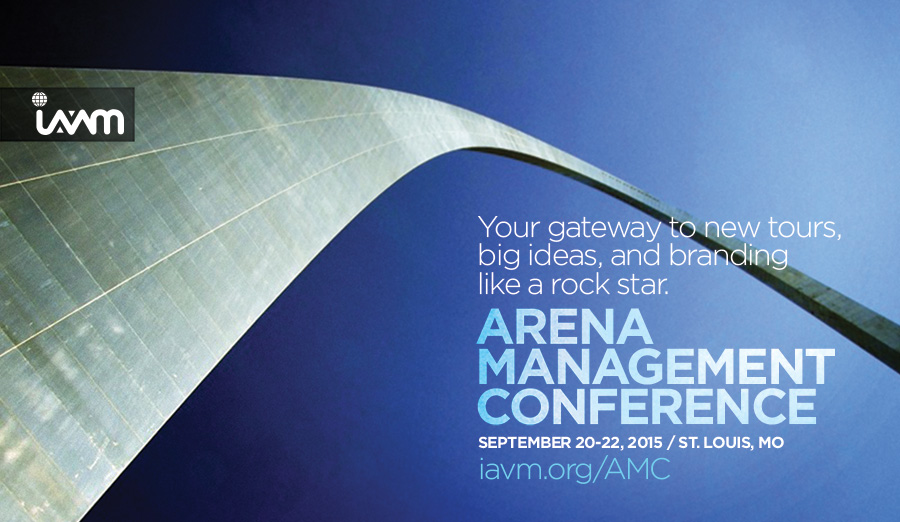
The 2015 Arena Management Conference features a full schedule of great sessions and amazing networking—with some amazing people working backstage to make it all happen. In addition to their full-time jobs, our rock star committee members volunteer their time to collaborate with staff on session topics, speakers, and networking events that help build a one-of-a-kind experience for every attendee.
So, while you’re enjoying the amazing view from the 360 rooftop bar at the AMC host hotel, here are a few people to connect with that helped bring it all together:
Lynda Reinhart
Chair, 2015-2016 AMC Committee
Director, Stephen C. O’Connell Center
Lynda, you took the lead as Chair of the AMC 2015 programming committee—why did you do it?
I have been active in IAVM and various conference programming for many years, and take pride in creating meaningful educational opportunities to further the growth of professionals in this industry.
What stands out this year at AMC?
There are so many great things in the program that it’s hard to pick just one. The opening and closing keynotes should be fantastic and we’ve got some really great networking events scheduled.
If you were giving the keynote presentation, what would be your walk-up song?
What’s the topic of the presentation? (I know, I’m difficult!) While the topic would ultimately determine my choice, I’ll go with “All Star” by Smashmouth.
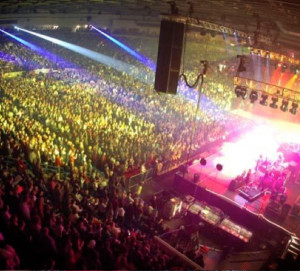 Andrew Prince
Andrew Prince
Executive Vice President, Venue Coalition
Andrew, what’s your AMC elevator pitch?
A great event to meet like-minded arena managers and an opportunity to get up to speed on the latest and greatest in the arena business.
Anything you’re specifically looking forward to?
Since I wake up everyday motivated to book events in arenas, my top-two panels would be the music and non-music agent/promoter panels.
Why did you serve on the committee this year?
IAVM is a great organization that supports an industry I love; the least I can do is pay it forward.
If you were giving the keynote presentation, what would be your walk-up song?
“Simple Man” — Lynyrd Skynyrd.
Glenn Walinski, CFE
Facility Manager, Tyson Events Center/Gateway Arena
Glenn, what do you look forward to at AMC?
Seeing old friends and making new ones.
How do you describe the conference?
AMC is the best conference for talking directly to managers of arenas of all sizes from around the country/world. You can interact with managers of all levels, and everyone shares information.
Why did you help plan AMC 2015?
I want to give back a little to an industry that has given me so much over the past 25 years, and I want the new managers in the industry to get as much education and information as possible to tack back home to their facilities.
If you were giving the keynote presentation, what would be your walk-up song?
The theme to Star Wars.
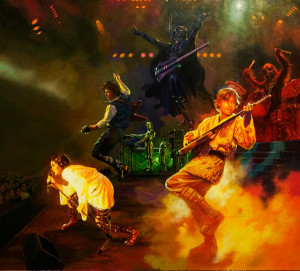
Matt Gibson, CFE
General Manager, Spokane Veterans Memorial Arena
What are you most looking forward to at AMC 2015?
I was promised that I could throw out the first pitch at the Cards game. That’s still happening, right?
Um, well, in case that falls through… anything else?
“The Show MUST Go On!” session of course! How can you turn away from a panel full of stories of chaos and carnage?!?
What is AMC all about for you?
It is THE annual event where a venue manager can network, talk shop, secure progressive ideas and let loose with friends and colleagues. DON’T. MISS. IT.
If you were giving the keynote presentation, what would be your intro song?
“Enter Sandman” – Metallica.
Josh Small
Director, USC Aiken Convocation Center/Global Spectrum
What’s at the top of your AMC itinerary?
The opening reception at Anheuser-Busch! The promoter/agent panel is also always entertaining and informative.
Why did you help on the AMC committee this year?
I wanted to find a way to give back to an organization that has provided several opportunities to myself and others.
Your keynote walkup song?
“Rollercoaster” —Bleachers.
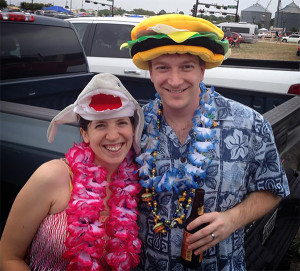 Jeff Davis, CMP
Jeff Davis, CMP
General Manager, College Park Center – UT Arlington
What is AMC?
It is THE “can’t miss” conference for anyone in the arena industry, with a great balance of education, industry hot topics and networking.
Any specific can’t miss moments for you?
All of it??? Ok, if I had to narrow to one session… I’m most looking forward to the Food & Beverage session discussing new EMV chip technology for POS terminals. It’s something we’re looking at right now in our operations, both F&B and Box Office, so very timely.
What song would play before your big presentation?
Easy…. Jimmy Buffett’s “Margaritaville.”
Maybe that says too much about the industry… or barely scratches the surface, depending on the time of day. But it fits my laid back personality. And when it comes to work, one thing I know is that I enjoy creating experiences and memories for fans that walk through the doors. It’s rare I get the opportunity to be the “fan”… to fully enjoy the experience for myself… except when Jimmy comes to town.

Todd Hunt, CFE
Director, BancorpSouth Arena
Given your skills on a kit, let’s start with the walk-up music you would play if you were giving the keynote?
“Unchained” —Van Halen.
Why AMC?
AMC is the premier conference for arena personnel. Not only can you pick up tips on how to better manage your venue, you can also come home with content via the agent/promoter sessions.
Anything specific that you’re looking forward to this year?
Reconnecting with old friends and checking out the ballpark!
You’ve helped build AMC, and you now serve on the IAVM Board of Directors as the Arenas Director. Why?
My good friend Terry Butler convinced me that I needed to give back to the association by getting involved. As usual, his advice was spot on!
To the entire AMC 2015 crew: Thank you for your passion and creativity, and we can’t wait to experience the conference you helped build. To everyone else, check out the AMC schedule, register, book your hotel, and see you at the rooftop bar.
Do you want to receive a Front Row News weekly digest?
Categories
- Allied (861)
- Architecture (147)
- Arenas (747)
- Career (897)
- Convention Centers (895)
- Education (623)
- Events (1,544)
- Food & Beverage (193)
- Foundation (113)
- Guest Experience (1,496)
- Industry News (2,270)
- Leadership (1,888)
- Marketing (150)
- Membership (2,000)
- Music (213)
- Performing Arts Centers (454)
- Professional Development (409)
- Research (127)
- Safety & Security (442)
- Sports (763)
- Stadiums (608)
- Student (159)
- Technology (516)
- Ticketing (92)
- Touring (82)
- Trends (364)
- Uncategorized (743)
- Universities (218)
- Video (25)
- Young Professional (198)
Twitter Feed
- Twitter feed loading
Recent Posts
- Venuworks and ATG Entertainment Selected to Manage Fresno Convention and Entertainment Center
- Seattle Convention Center Announces Strategic Leadership Appointment and Growth Initiatives for 2026
- Peggy Daidakis Humbly Made Convention Center History
- Welcome to Our Newest Members
- New Member Benefit! IAVM Partners with Advantage Training to Elevate Staff Readiness and Guest Experience
Categories
- Allied
- Architecture
- Arenas
- Career
- Convention Centers
- Education
- Events
- Food & Beverage
- Foundation
- Guest Experience
- Industry News
- Leadership
- Marketing
- Membership
- Music
- Performing Arts Centers
- Professional Development
- Research
- Safety & Security
- Sports
- Stadiums
- Student
- Technology
- Ticketing
- Touring
- Trends
- Uncategorized
- Universities
- Video
- Young Professional
Archives
- December 2025
- November 2025
- October 2025
- September 2025
- August 2025
- July 2025
- June 2025
- May 2025
- April 2025
- March 2025
- February 2025
- January 2025
- December 2024
- November 2024
- October 2024
- September 2024
- August 2024
- July 2024
- June 2024
- May 2024
- April 2024
- March 2024
- February 2024
- January 2024
- December 2023
- November 2023
- October 2023
- September 2023
- August 2023
- July 2023
- June 2023
- May 2023
- April 2023
- March 2023
- February 2023
- January 2023
- December 2022
- November 2022
- October 2022
- September 2022
- August 2022
- July 2022
- June 2022
- May 2022
- April 2022
- March 2022
- February 2022
- January 2022
- December 2021
- November 2021
- October 2021
- September 2021
- August 2021
- July 2021
- June 2021
- May 2021
- April 2021
- March 2021
- February 2021
- January 2021
- December 2020
- November 2020
- October 2020
- September 2020
- August 2020
- July 2020
- June 2020
- May 2020
- April 2020
- March 2020
- February 2020
- January 2020
- December 2019
- November 2019
- October 2019
- September 2019
- August 2019
- July 2019
- June 2019
- May 2019
- April 2019
- March 2019
- February 2019
- January 2019
- December 2018
- November 2018
- October 2018
- September 2018
- August 2018
- July 2018
- June 2018
- May 2018
- April 2018
- March 2018
- February 2018
- January 2018
- December 2017
- November 2017
- October 2017
- September 2017
- August 2017
- July 2017
- June 2017
- May 2017
- April 2017
- March 2017
- February 2017
- January 2017
- December 2016
- November 2016
- October 2016
- September 2016
- August 2016
- July 2016
- June 2016
- May 2016
- April 2016
- March 2016
- February 2016
- January 2016
- December 2015
- November 2015
- October 2015
- September 2015
- August 2015
- July 2015
- June 2015
- May 2015
- April 2015
- March 2015
- February 2015
- January 2015
- December 2014
- November 2014
- October 2014
- September 2014
- August 2014
- July 2014
- June 2014
- May 2014
- April 2014
- March 2014
- February 2014
- January 2014
- December 2013
- November 2013
- October 2013
- September 2013
- August 2013
- July 2013
- June 2013
- May 2013
- April 2013
- March 2013
- February 2013
- January 2013
- May 2012
- March 2012
- December 2011
- November 2011
- October 2011
Recent Comments
- Frank Bradshaw, Ph.D., CVE on John Meyer, CVE, a Tireless Advocate of Certification for Venue Professionals, Has Died
- Neil Sulkes on Hilary Hartung, Friend to Many in Venue Marketing, Has Left Us
- Jason Parker, CVE on The Devastation of Hurricane Helene and How We Can Support One Another
- Larry Perkins on Touhey Testifies Against Speculative Ticketing Before Congressional Subcommittee
- Peter Secord on Major Players for Planned Elkhart Amphitheater Were in the Mix at VenueConnect

